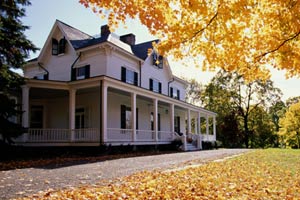Conserving Energy
Fixing anything to do with climate control is like getting first pick of the best  players – it’s money in the bank. Many homeowners attend to issues around heating as a means of saving money on energy bills – and rightfully so. In many areas, heat is typically one of the largest winter expenses. The trick is to minimize drafts and to utilize the heat as effectively as possible. Begin by checking attic insulation levels and fill gaps with insulation appropriate for your climate.
players – it’s money in the bank. Many homeowners attend to issues around heating as a means of saving money on energy bills – and rightfully so. In many areas, heat is typically one of the largest winter expenses. The trick is to minimize drafts and to utilize the heat as effectively as possible. Begin by checking attic insulation levels and fill gaps with insulation appropriate for your climate.
Next, windows and doors with cracked or broken glass or that are poorly sealed should be fixed. Additionally, if the seals at the bottom of exterior doors are not tight, consider replacing thresholds and/or door bottoms. Weather stripping is inexpensive and easy to install along the top and sides of doors. Interior doors may benefit from “draft dodgers” that stop air from cooler rooms from coming under the door, especially consider doors to basements and garages.
Get that furnace or heat pump serviced, clean or change any filters, and ensure that all thermostats are in working order. Consider installing a programmable thermostat to optimize your energy consumption. Additionally, heating hot water and keeping it warm is a big energy draw. Ensure that the hot water heater is working well and that it is insulated if it is located in a cold location.
Woodstoves and chimneys should be clean and ready for use – employ a chimney sweep to check and clean them. Creosote build-up or debris from animals can start a fire in the chimney or stovepipe, which could ignite the roof.
Drying clothes in a dryer also consumes a high level of energy. In cool and damp climates dryer vents tend to collect lint and may become clogged, making these machines much less efficient. Cleaning dryers thoroughly with a lint brush can also prevent fires from starting.
Marie Dinsmore, Certified Luxury Home Marketing Specialist
The Dinsmore Real Estate Team | www.dinsmoreteam.com


